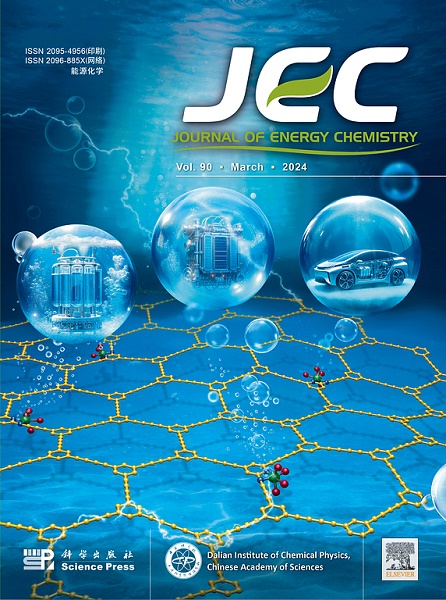Radical characteristic reactions in lignin pyrolysis: Aryl migration on linkages and substituents
IF 13.1
1区 化学
Q1 Energy
引用次数: 0
Abstract
Lignin pyrolysis leads to the formation of diverse phenolic products that bear structural similarities to natural lignin, and the related mechanism has been widely explored based on the linkage cleavage-involved reactions. However, some unusual pyrolytic products exhibiting significant structure deviations from lignin, such as aldehydes, remain obscure in mechanism due to long-standing neglect of their formation pathways. The present work found the pivotal role of aryl migration, a special radical-mediated rearrangement process, in governing the formation of these atypical products for the first time. Herein, density functional theory calculations, electronic structure analyses, and pyrolysis experiments were combined to investigate rearrangement patterns and prerequisite structural characteristics of aryl migration by employing typical radicals derived from linkages and substituents of lignin as models. The results indicate that the radical with an unpaired electron located on the second atom of the aromatic side chain can undergo three-membered aryl 1,2-migration triggered by exo cyclization with the best superiority, determining the generation of aldehydes, alkenes, and other products through subsequent cleavage reactions. A clear correlation among the initial geometric and electronic structures of lignin, the patterns and types of aryl migration, the energy barriers, and the end products was established. This study contributes to systematically elucidating rearrangement mechanisms and constructing a more comprehensive lignin pyrolysis mechanism network.

木质素热解中的自由基特征反应:芳基在键和取代基上的迁移
木质素热解可生成与天然木质素结构相似的多种酚类产物,其相关机理已被广泛探讨。然而,一些不寻常的热解产物表现出与木质素显著的结构偏差,如醛,由于长期忽视其形成途径,其机制仍然不清楚。本研究首次发现了芳基迁移(一种特殊的自由基介导的重排过程)在控制这些非典型产物形成中的关键作用。本文采用密度泛函理论计算、电子结构分析和热解实验相结合的方法,以木质素键和取代基的典型自由基为模型,研究了芳基迁移的重排模式和先决结构特征。结果表明,在芳侧链第二原子上有未配对电子的自由基,其外显环化触发芳基1,2-三元迁移的优势最大,决定了后续裂解反应生成醛类、烯烃等产物。木质素的初始几何和电子结构、芳基迁移的模式和类型、能垒和最终产物之间存在明显的相关性。本研究有助于系统阐明重排机制,构建更全面的木质素热解机制网络。
本文章由计算机程序翻译,如有差异,请以英文原文为准。
求助全文
约1分钟内获得全文
求助全文
来源期刊

Journal of Energy Chemistry
CHEMISTRY, APPLIED-CHEMISTRY, PHYSICAL
CiteScore
19.10
自引率
8.40%
发文量
3631
审稿时长
15 days
期刊介绍:
The Journal of Energy Chemistry, the official publication of Science Press and the Dalian Institute of Chemical Physics, Chinese Academy of Sciences, serves as a platform for reporting creative research and innovative applications in energy chemistry. It mainly reports on creative researches and innovative applications of chemical conversions of fossil energy, carbon dioxide, electrochemical energy and hydrogen energy, as well as the conversions of biomass and solar energy related with chemical issues to promote academic exchanges in the field of energy chemistry and to accelerate the exploration, research and development of energy science and technologies.
This journal focuses on original research papers covering various topics within energy chemistry worldwide, including:
Optimized utilization of fossil energy
Hydrogen energy
Conversion and storage of electrochemical energy
Capture, storage, and chemical conversion of carbon dioxide
Materials and nanotechnologies for energy conversion and storage
Chemistry in biomass conversion
Chemistry in the utilization of solar energy
 求助内容:
求助内容: 应助结果提醒方式:
应助结果提醒方式:


